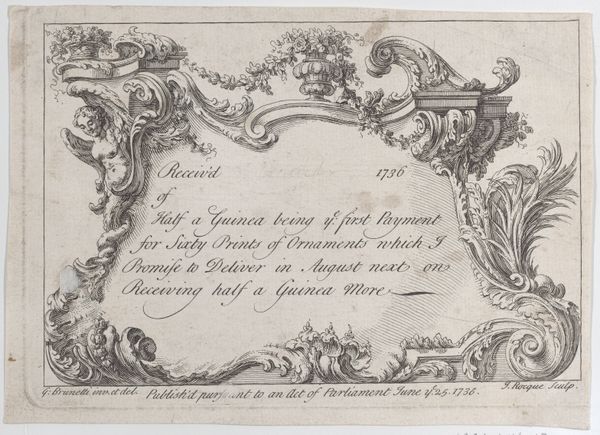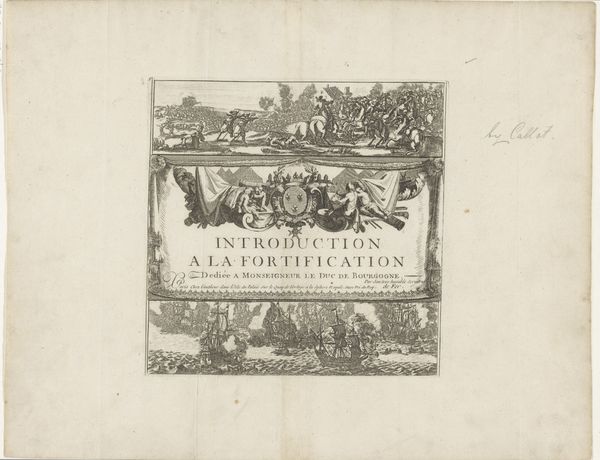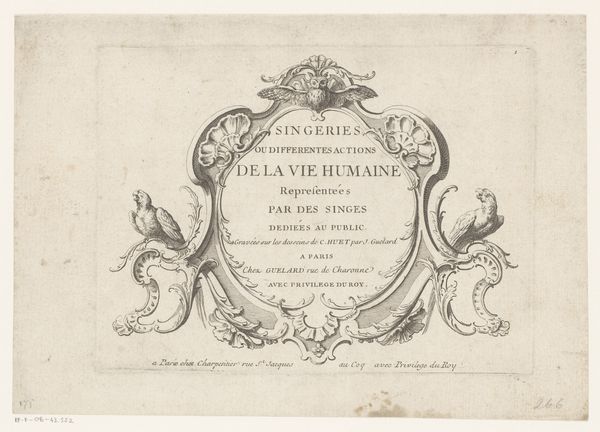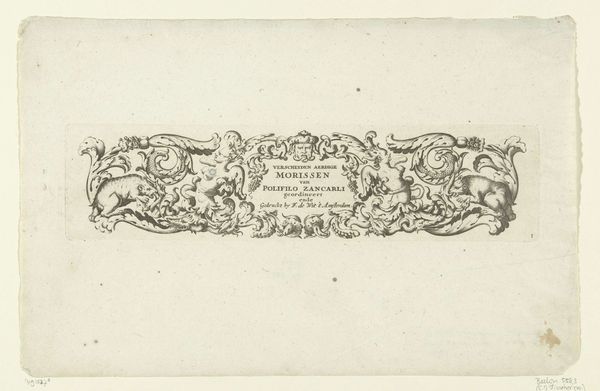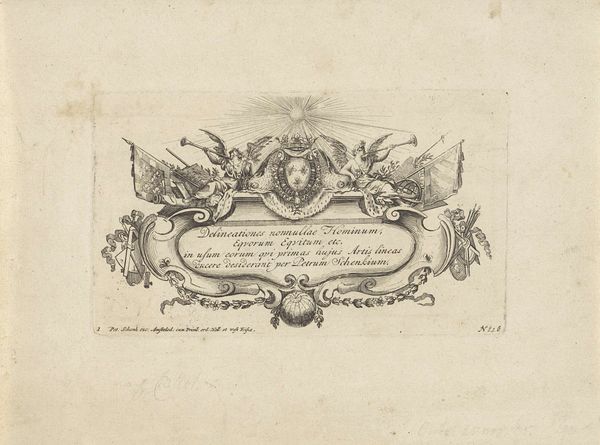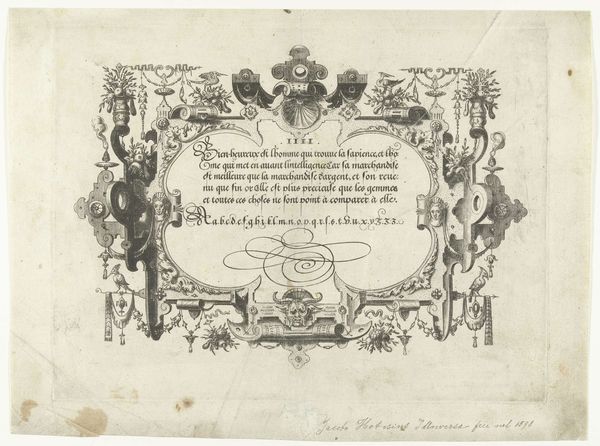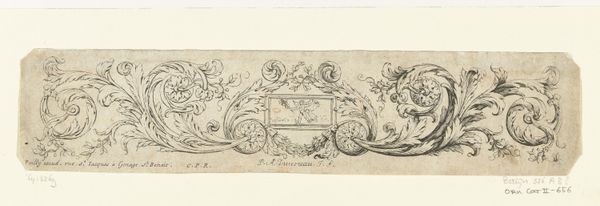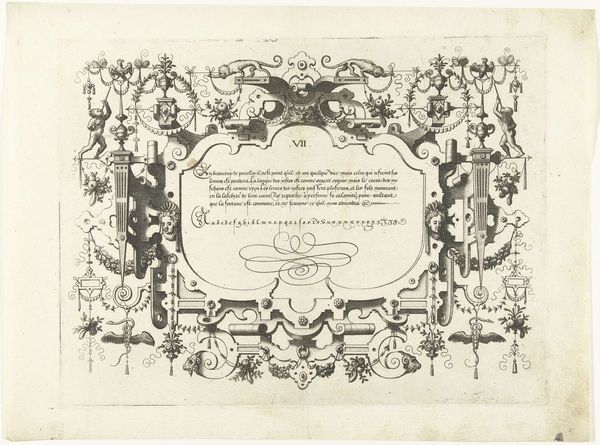
drawing, print, ink, engraving
#
drawing
#
allegory
#
baroque
# print
#
ink
#
decorative-art
#
engraving
Dimensions: height 191 mm, width 269 mm
Copyright: Rijks Museum: Open Domain
Editor: We’re looking at a drawing, “Titelprent: Ornemens de panneaux, lambris, carosses &c.” from after 1680 by an anonymous artist. It's an intricate design, made with ink and engraving. It has quite a decorative feel. What do you make of this, especially considering the context it was created in? Curator: Well, as a historian, I'm drawn to what this print reveals about the society and institutions of its time. The very title, detailing ornaments for panels, wainscoting, and carriages, points to the rising wealth and focus on elaborate aesthetics. Consider the market this print served: Who could afford such decoration? Who controlled its production and distribution? Editor: It seems like it was meant for a pretty exclusive clientele, right? Those details sound like luxury goods. Curator: Precisely. It's not simply an aesthetic object, but evidence of social stratification and power dynamics. The allegorical figures, too—the cherubs, for instance—aren't just decorative. How might these figures have reinforced or challenged prevailing social values? And how might the display of wealth through decoration, reflected in this design, impact the public role of art? Editor: That's fascinating. So you’re saying it's not just about how beautiful the drawing is, but also who got to enjoy that beauty and what messages that beauty sent. Curator: Exactly. Think about how the ruling class and emerging bourgeoisie used decorative arts like this to signal status, and how public perceptions of art and access to its beauty might reflect existing political or economic tensions. We need to understand who created this image, for whom, and within what system of patronage. Editor: I never thought of ornamental designs in terms of socio-political forces, that's a very different way to appreciate this. Thanks for pointing out the relationship to its historical background. Curator: My pleasure. It shows that even seemingly innocuous art can illuminate power.
Comments
No comments
Be the first to comment and join the conversation on the ultimate creative platform.



